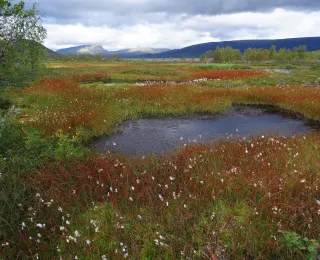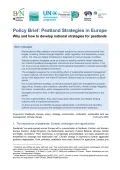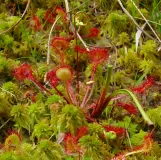Peatland strategies in Europe

Background: Why peatland conservation strategies are needed
In Germany and various other countries in Europe, the vast majority of peatlands have been drained and are used either for farming or forestry. In those countries, near-natural peatland ecosystems only exist in small, residual areas. They provide habitats for rare animal and plant species and thus play an important role in biodiversity conservation. Peatland sites, their status and use have also influenced the landscape water balance and nutrient flows. Depending on water levels, they also affect the climate – when wet they serve as carbon sinks and when drained they are a source of greenhouse gas emissions. Against this backdrop, in recent years peatlands have increasingly become the focus of climate action and other environment protection efforts. It is thus important that – as their major users – nature conservation, farming and forestry also include the water sector as a key partner along with other stakeholders in their efforts to protect peatlands and use them wisely. This is why peatland conservation calls for increasingly comprehensive conservation strategies.
The aim of peatland strategies is to advance conservation by ensuring that the conditions to enable implementation are improved. Which of the above-mentioned aspects of peatland protection they actually address and the instruments they use in strategy implementation can vary significantly, however.
European Peatland Strategies Workshop
From 28 – 29 October 2019, experts from 12 European countries met at a BfN-funded workshop in Bonn to discuss strategies for peatland conservation.
The aim of the two-day workshop was to exchange views and ideas on the goals, content and approaches of the peatland strategies already in place, those planned in various European countries, and the experience gained in their implementation so far. It was hoped that the workshop would help in identifying key elements of the strategies that should be taken into account against the backdrop of overarching policy goals in areas such as climate change mitigation, nature conservation, and protection and management of water. The current status of and need for integration of various aspects of peatland conservation in strategies at EU level were also discussed and other international frameworks of relevance for peatland conservation presented.
In addition to BfN, the workshop was co-organised by the Michael Succow Foundation for the Protection of Nature and the Ramsar Convention Secretariat.


